In the space of a few decades, Taiwan has changed from a place where characterful old buildings were thoughtlessly bulldozed to make space for wider roads or bigger homes, to a society much more likely to cherish physical reminders of the past.
The authorities have poured money into restoration and renovation work. According to a Nov. 10, 2020 post on Tainan City Government’s Municipal Administration of Cultural Heritage Web site, in the first nine months of 2020, the Ministry of Culture’s (MOC) Bureau of Cultural Heritage approved 13 such projects in the southern city, setting a total budget of NT$281.6 million. The MOC committed to providing 52 percent of the funding. The city government took responsibility for 33 percent, with the rest of the money coming from building owners.
As Taiwan’s former capital and a stronghold of tangible and intangible tradition, it’s no surprise that Tainan gets a lion’s share of public-sector restoration spending.
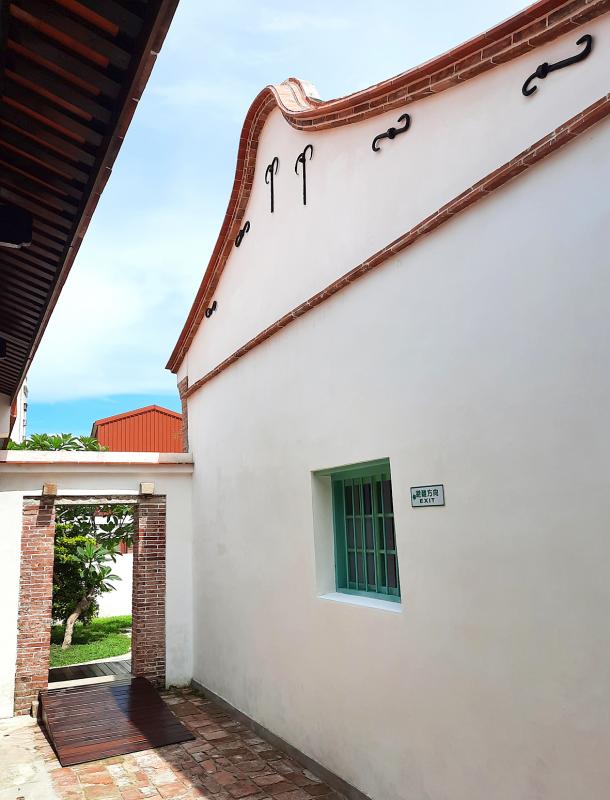
Photo: Steven Crook
XIZHUWEI HILLS CULTURAL AND CREATIVE PARK
One such project is now the centerpiece of Xizhuwei Hills Cultural & Creative Park (西竹圍之丘文創園區) at 197 Yule Street (育樂街), 500m from the rear entrance of Tainan TRA Station.
The Former Tainan Prefecture Governor’s Residence (原臺南廳長官邸) is a single-story house that was built no later than 1906, and repaired and redecorated in 2016-2017.
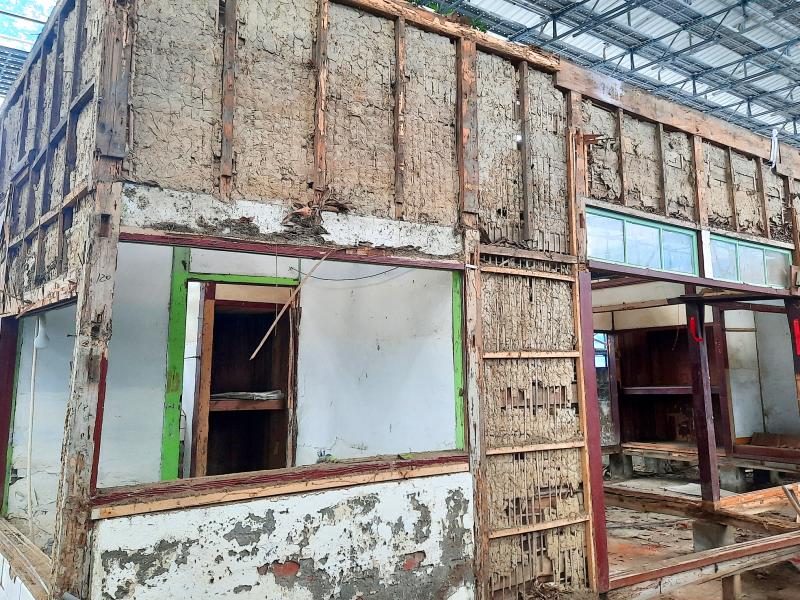
Photo: Steven Crook
The building now labeled as the residence — a sublime combination of Western and Japanese architectural features — was in fact the governor’s office and reception area. He and his family actually inhabited a neighboring Japanese-style wooden bungalow that was destroyed by fire more than 20 years ago.
The residence is open to the public every Friday, Saturday, and Sunday, from 9am to 5pm. There’s no admission charge.
Ongoing renovation projects include major undertakings at two sites in Tainan’s ancient downtown and at a third in Sinying (新營).
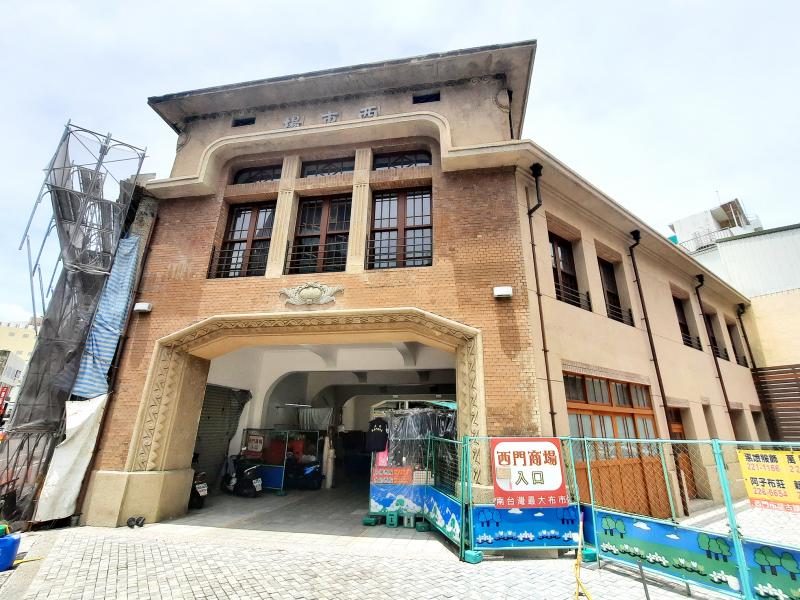
Photo: Steven Crook
CHEN SHIH SING HOUSE
Work at the Chen Shih Sing House (陳世興宅) is several months behind schedule, but looks to be approaching completion.
Chen Shih Sing isn’t, as you might assume, a person’s name, but rather the name of an 18th-century land-reclamation partnership. During the period of Qing Dynasty rule (1683 to 1895), such enterprises financed the labor-intensive conversion of untilled land into highly productive rice paddies.
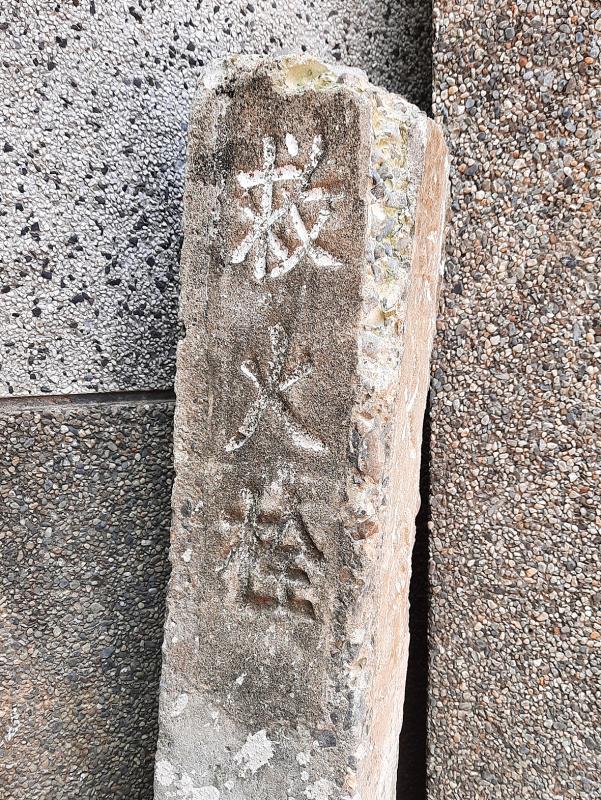
Photo: Steven Crook
The NT$42.6-million restoration effort kicked off in 2019, and should have been finished by the end of last year. Craftsmen have straightened sagging roofs, damp proofed and replastered walls and redone from scratch a great deal of internal woodwork.
The Chen Shih Sing partnership was established in 1776, but the house is even older. It was built around 1750, or perhaps as early as 1719. Whatever the truth, this cluster of interconnected halls and wings now boasts gleaming white walls, derusted wall anchors (hook-like metal fixtures designed to stop walls from bulging outward), and brand-new wooden ladders to the raised sleeping quarters.
Ownership of the property (which once had its own stables) will remain with descendants of Chen Deng-chang (陳登昌), a Fujianese pioneer who seems to have arrived in Taiwan around the time Cheng Cheng-kung (鄭成功, often called Koxinga) and his army of Ming dynasty loyalists violently ended the Dutch East India Company’s 1624-1662 occupation of Tainan.
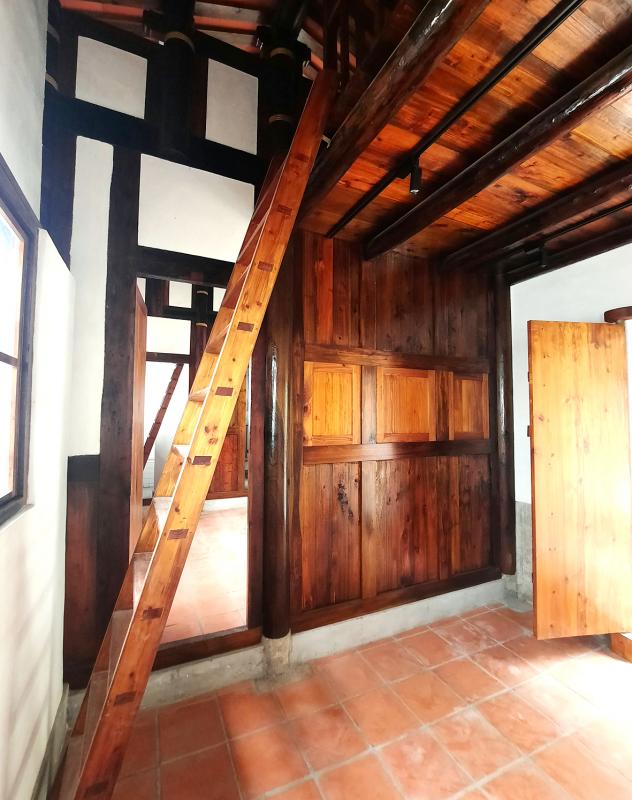
Photo: Steven Crook
How much of the house — located at 46, Lane 317, Minzu Road Section 2 (民族路二段) — will be open to the public, and how often, has yet to be announced.
ASAKUSA SHOPPING CENTER
On the corner of Simen Road (西門路) and Jhengsing Street (正興街), what the city government has rebranded as Asakusa Shopping Center (西門淺草青春新天地) is also undergoing refurbishment.
If you explore this maze of little shops right now, you can see both renovated and unrenovated sections.
The oldest part of the shopping center is the 1912 warehouse-like building set back from Jhengsing Street. Restoration work on this structure was finished last year. The front part is open to the public, and occupied by a handful of tailoring businesses. The end farthest from the street remains barricaded off, however.
A slightly more modern entrance to the complex faces the southwestern corner of the Simen-Jhengsing intersection. This building, which bears the name West Market (西市場), has been sandblasted clean and given new window frames.
Over the years, the interior has become a mishmash of different materials as individual vendors remodeled or expanded their shops. Looking up, there’s still an impressive amount of wood, despite the fire risk, as well as brick and corrugated iron.
It’ll be interesting to see if, once this makeover is complete, the market regains the sort of popularity it enjoyed in its glory days. The fabric and dressmaking businesses that have been here forever serve an aging clientele. If the authorities can engineer an influx of younger and more diverse vendors, the place could well become a tourist magnet or hipster hangout.
In terms of design and materials, the Chen Shih Sing House is a splendid example of traditional architecture. In its use of concrete and brick, Asakusa Shopping Center is typical of its era. Stripping down a set of buildings located in Sinying has revealed yet another construction technique.
PHARMACEUTICAL COMPANY JAPANESE-ERA DORM
The Pharmaceutical Company Japanese-Era Dormitory (藥仔會社日式宿舍) is all that remains of a five-hectare industrial site that once sprawled between Yihe Street (義和街) and Dongsing Road (東興路).
The dormitory housed some of those who worked at a medicine factory which manufactured antimalarials and narcotics for the Japanese armed forces. The entrepreneur who founded the company in 1923 may have won these contracts through family connections — a few years earlier, his father, Takahashi Korekiyo (高橋是清), had served as Japan’s prime minister.
Following Japan’s defeat at the end of World War II, the factory was taken over by the incoming Chinese Nationalist Party (KMT) government. Later, one part became a junior high school campus.
If you get close to the buildings being restored, you’ll notice that the lower third of many walls is brick, while the upper parts are wooden framed. Spaces between the wood columns are filled with lattices of bamboo slats on which a mix of mud and other materials (possibly rice husks and pig dung) has been daubed.
A temporary yet sturdy cover has been erected high above the structures under repair. This way, conservation artisans can dismantle roofs, replace rotten floors, and restore fragile features without having to worry about the weather.
Watching a renovation in progress is often as interesting as seeing the results. If you come across an architectural rehabilitation project and it’s possible to take a look, don’t hesitate to do so.
Steven Crook has been writing about travel, culture and business in Taiwan since 1996. He is the author of Taiwan: The Bradt Travel Guide and co-author of A Culinary History of Taipei: Beyond Pork and Ponlai.

May 18 to May 24 Pastor Yang Hsu’s (楊煦) congregation was shocked upon seeing the land he chose to build his orphanage. It was surrounded by mountains on three sides, and the only way to access it was to cross a river by foot. The soil was poor due to runoff, and large rocks strewn across the plot prevented much from growing. In addition, there was no running water or electricity. But it was all Yang could afford. He and his Indigenous Atayal wife Lin Feng-ying (林鳳英) had already been caring for 24 orphans in their home, and they were in

President William Lai (賴清德) yesterday delivered an address marking the first anniversary of his presidency. In the speech, Lai affirmed Taiwan’s global role in technology, trade and security. He announced economic and national security initiatives, and emphasized democratic values and cross-party cooperation. The following is the full text of his speech: Yesterday, outside of Beida Elementary School in New Taipei City’s Sanxia District (三峽), there was a major traffic accident that, sadly, claimed several lives and resulted in multiple injuries. The Executive Yuan immediately formed a task force, and last night I personally visited the victims in hospital. Central government agencies and the

Australia’s ABC last week published a piece on the recall campaign. The article emphasized the divisions in Taiwanese society and blamed the recall for worsening them. It quotes a supporter of the Taiwan People’s Party (TPP) as saying “I’m 43 years old, born and raised here, and I’ve never seen the country this divided in my entire life.” Apparently, as an adult, she slept through the post-election violence in 2000 and 2004 by the Chinese Nationalist Party (KMT), the veiled coup threats by the military when Chen Shui-bian (陳水扁) became president, the 2006 Red Shirt protests against him ginned up by

As with most of northern Thailand’s Chinese Nationalist Party (KMT) settlements, the village of Arunothai was only given a Thai name once the Thai government began in the 1970s to assert control over the border region and initiate a decades-long process of political integration. The village’s original name, bestowed by its Yunnanese founders when they first settled the valley in the late 1960s, was a Chinese name, Dagudi (大谷地), which literally translates as “a place for threshing rice.” At that time, these village founders did not know how permanent their settlement would be. Most of Arunothai’s first generation were soldiers